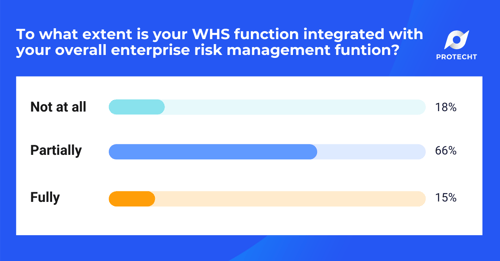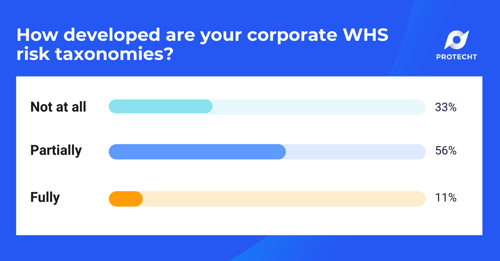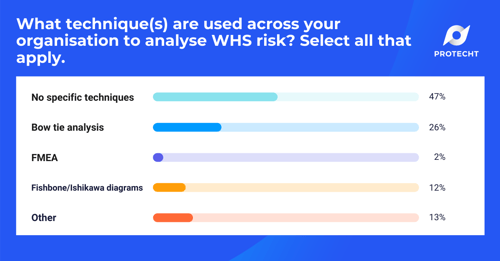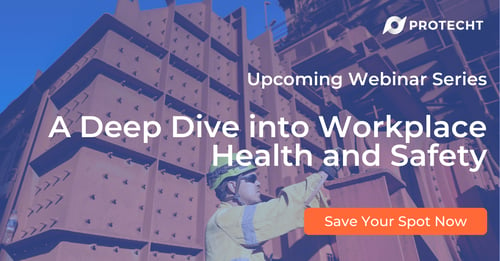Protecht’s eleven-part complimentary webinar series focusing on a comprehensive and deep dive into workplace health and safety, kicked off on 23 July 2020.
Click here to watch all session in this series on demand.
The first webinar of the series focused on the importance of health and safety in the workplace and getting an understanding of how to manage workplace health and safety risks and setting the scene for developing a strong enterprise level WHS function, integrated with a wider enterprise risk management framework. The focus of the first webinar was the importance of the ISO 450001 standard: OH&S Management Systems, as a basis for building an organisation wide WHS capability.
We also addressed the importance of a central risk taxonomy for enterprise risk management which adequately caters for the WHS function and WHS risks. I was joined by Michael Martin from C-Suite Safety Solutions.
The overall focus of the webinar series is on the integration, as far as possible, of WHS and Enterprise Risk Management (ERM) in order to maximise the value and effectiveness of both functions. The benefits and value created by this integration are:
1. Consistency of data and reporting at all levels with drill down capability
Apart from knowing how and when to report health and safety risks, consistency is also key in producing effective and engaging WHS reporting. WHS data collected at the granular level becomes the single source of truth. It is then linked to aggregated information categories including the WHS risk type, the risk cause type, the risk impact type and the control type. This allows complete consistency of reporting as the same information is used for multiple purposes at each level of the organisation. In addition, due to the linking of data, Board and Management reports can incorporated drill down capability to allow easy investigation and analysis of aggregated data.
2. Maximum efficiency
Efficiency is part of the process of learning how to effectively manage work health and safety risks. Integration leads to optimal efficiency as WHS processes are performed once, data is collected once yet it is used multiple times. Reporting to senior management and the board is seamless. There is no dual keying of data and duplication of effort.
3. Greater transparency at senior level of the WHS function
The aggregation of a range of WHS data to enable senior management and board reporting provides greater visibility of the WHS function. Senior management and Board are made aware of key of the key issues on an ongoing basis as part of their enterprise management risk management function. This can stress the importance of health and safety in the workplace as well as raise the profile of WHS and also ensure resources are made available for the key matters requiring attention.
4. Enhanced reporting of risk information
The linking of WHS data through to ERM, especially the linkage of WHS information to risk event types and other items such as risk control measures in the workplace, allows the enhancement of reporting through the ability to aggregate all available information to the risk type and report dynamically. We at Protecht refer to this as “RiskinMotion”.
Poll results from the session:
Around 200 health and safety professionals participated in the session and voted in the polls. One of the questions from the first webinar focused on the degree of integration between WHS and ERM. Here are the results:

This highlighted that only 15% of respondents had a fully integrated WHS / ERM process with two thirds being partially integrated. Surprisingly 18% have WHS and ERM as totally separate functions. While progress is being made on integration, it is clear there is still a long way to go.
We also addressed the importance of a well developed and robust central risk taxonomy which incorporates WHS by tracking safety risks in the workplace and what that taxonomy may look like.
A second poll highlighted that only 11% had fully developed risk taxonomies incorporating WHS, one third had no taxonomy and just over half had partially developed risk taxonomies. As the foundation of integrated ERM, it is vital that the risk framework is built around robust risk taxonomies.

We also addressed an analysis of risk using Bow Tie Analysis as an example technique. We polled regarding the main risk analysis technique used in WHS and this showed that:
- One half had no specific technique
- One quarter used Bow Tie analysis, the most common technique
- 12% used Fishbone diagrams
- 2% used FMEA
- The remainder primarily used ICAM.

In order to create a consistent view and understanding of WHS risks, it is important that a common analysis tool is used and Bow Tie Analysis seems to be the most common. Refer here for more guidance on Bow Tie Analysis.
Watch our webinar series on how to manage work health and safety risks
The next webinar in this series focuses on WHS Risk Treatments and Controls. Learn about risk control measures in the workplace and get access to the recordings of all sessions by clicking the image below.

